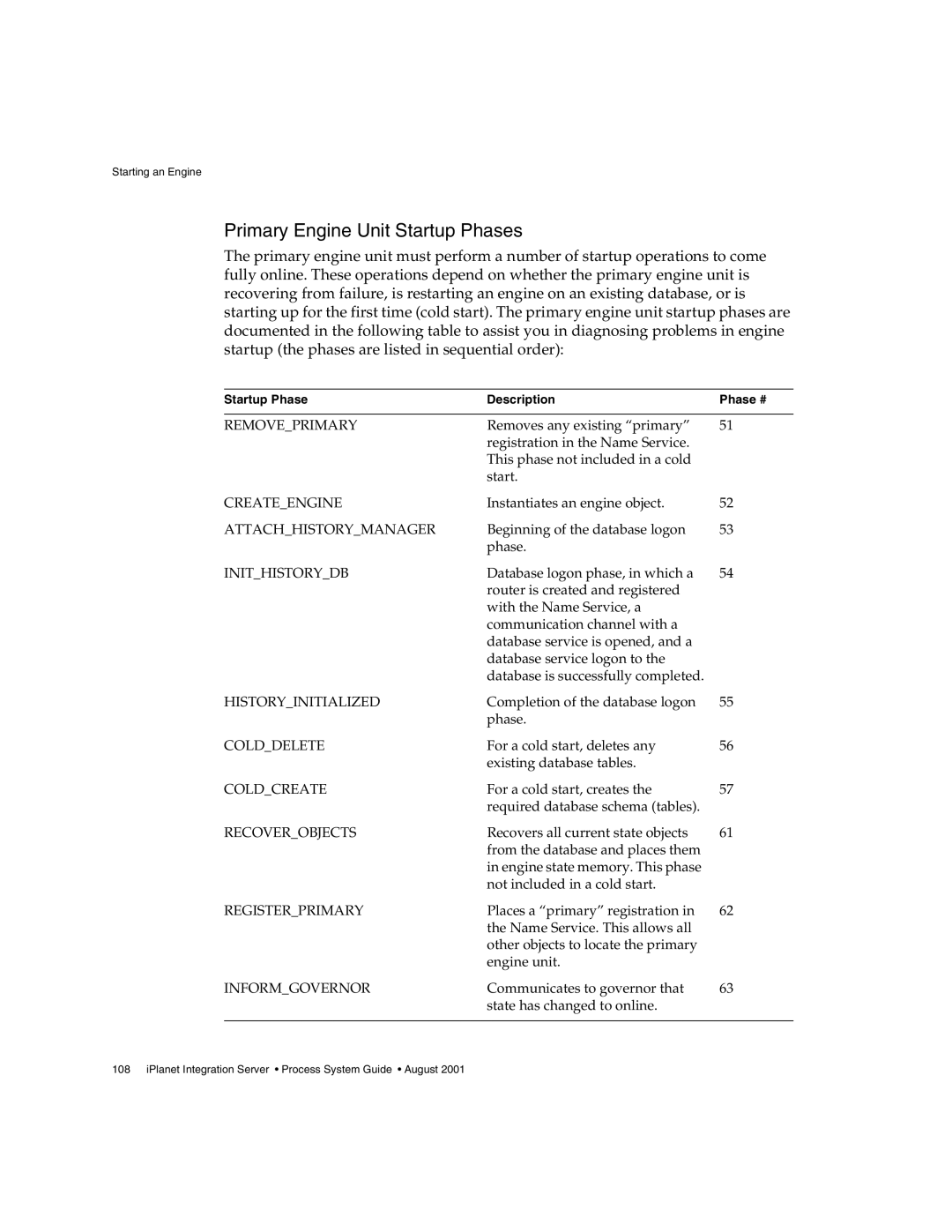Starting an Engine
Primary Engine Unit Startup Phases
The primary engine unit must perform a number of startup operations to come fully online. These operations depend on whether the primary engine unit is recovering from failure, is restarting an engine on an existing database, or is starting up for the first time (cold start). The primary engine unit startup phases are documented in the following table to assist you in diagnosing problems in engine startup (the phases are listed in sequential order):
Startup Phase | Description | Phase # |
|
|
|
REMOVE_PRIMARY | Removes any existing “primary” | 51 |
| registration in the Name Service. |
|
| This phase not included in a cold |
|
| start. |
|
CREATE_ENGINE | Instantiates an engine object. | 52 |
ATTACH_HISTORY_MANAGER | Beginning of the database logon | 53 |
| phase. |
|
INIT_HISTORY_DB | Database logon phase, in which a | 54 |
| router is created and registered |
|
| with the Name Service, a |
|
communication channel with a database service is opened, and a database service logon to the database is successfully completed.
HISTORY_INITIALIZED
COLD_DELETE
COLD_CREATE
RECOVER_OBJECTS
Completion of the database logon | 55 |
phase. |
|
For a cold start, deletes any | 56 |
existing database tables. |
|
For a cold start, creates the | 57 |
required database schema (tables). |
|
Recovers all current state objects | 61 |
from the database and places them |
|
in engine state memory. This phase not included in a cold start.
REGISTER_PRIMARY | Places a “primary” registration in | 62 |
| the Name Service. This allows all |
|
| other objects to locate the primary |
|
| engine unit. |
|
INFORM_GOVERNOR | Communicates to governor that | 63 |
| state has changed to online. |
|
|
|
|
